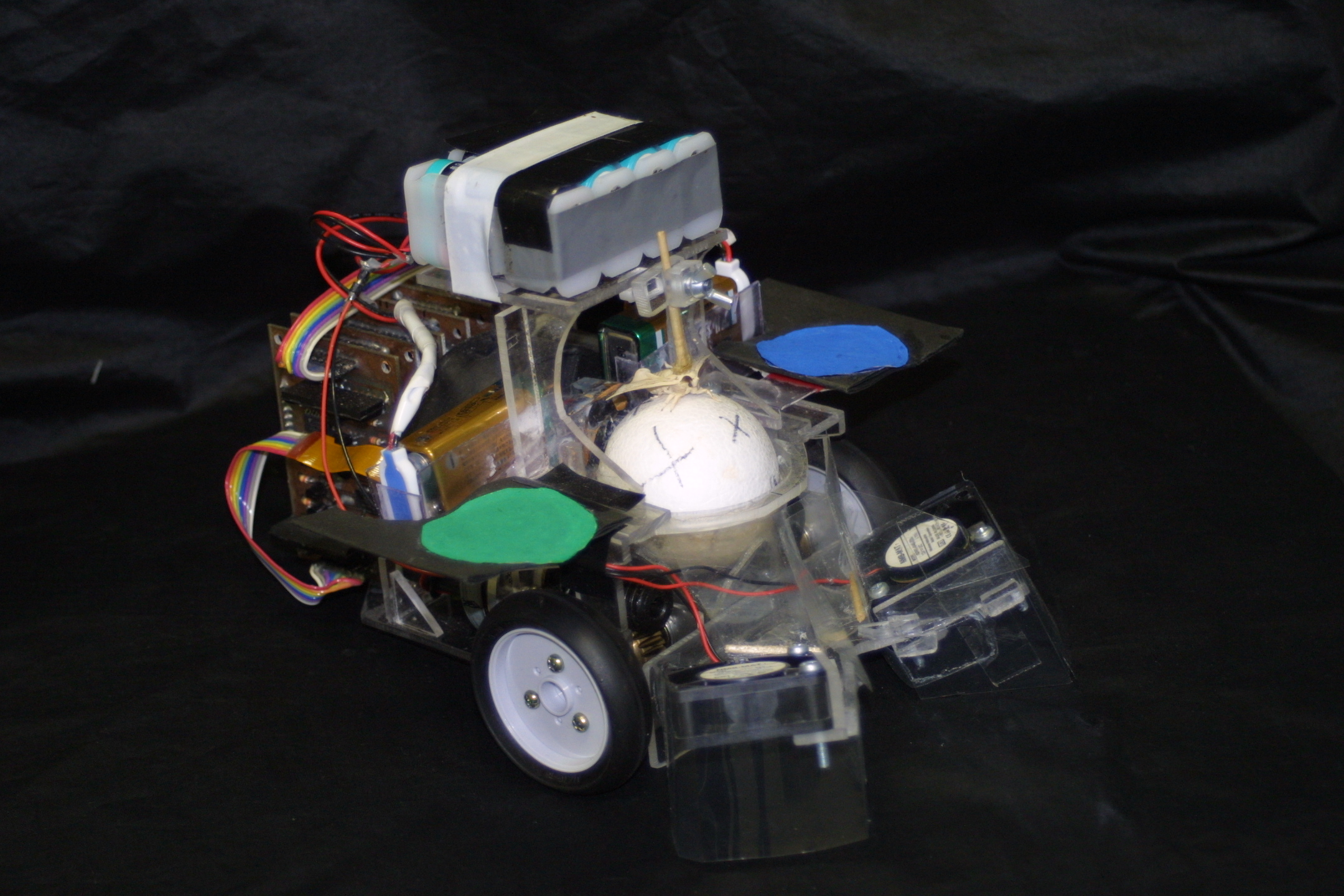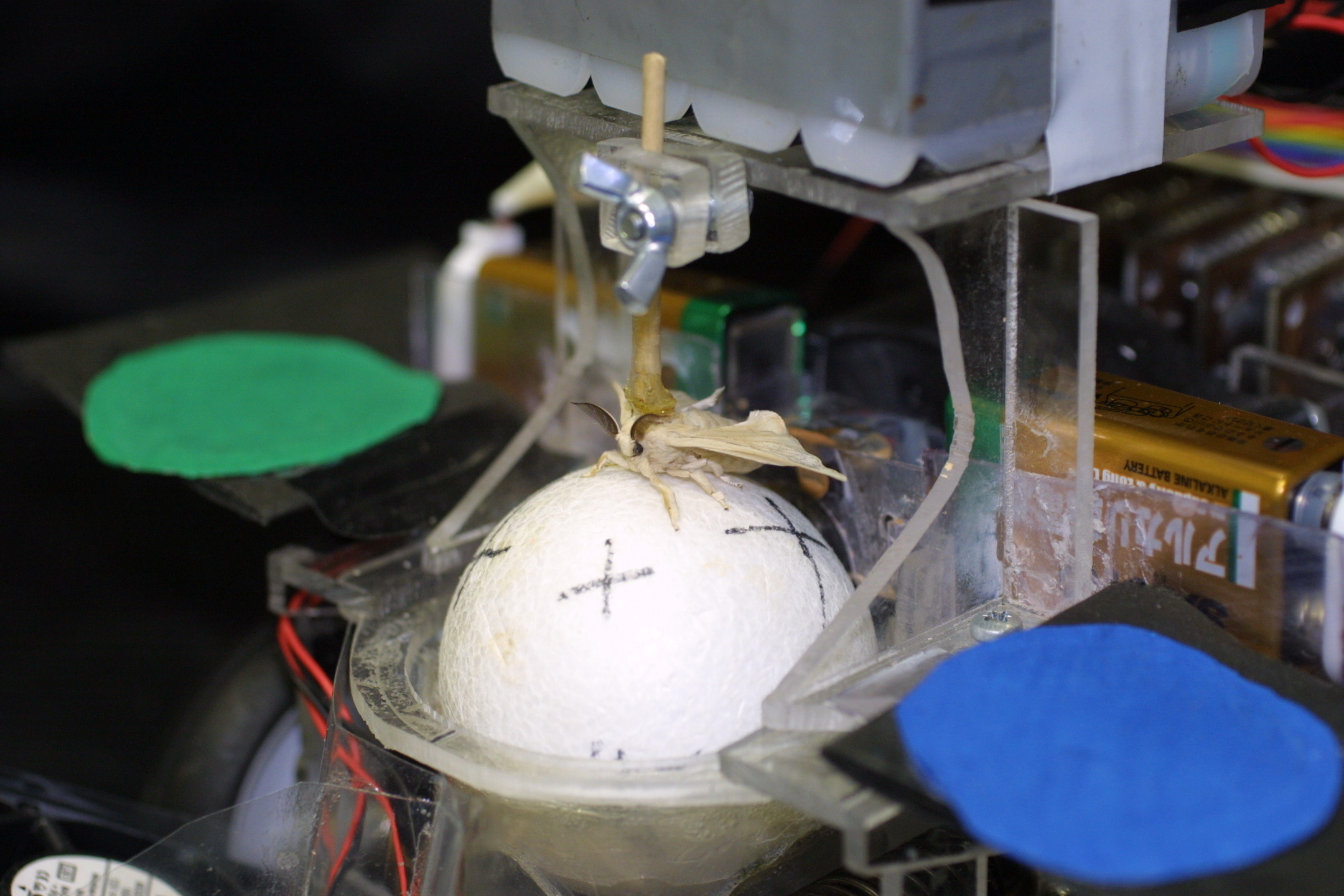Looks like humans aren’t the only species putting robots to use. Recently, a male moth drove a two-wheeled robot around in search for his female counterpart. A team of researchers from the University of Tokyo chose a male silk moth to drive the small robot and track down the sex pheromone given off by a female moth.

The male moth's mobile to track down the ladies. (Image via IOP Publishing)
The team used the robot to distinguish the moth’s tracking behaviors in hopes that the same characteristics can be applied to autonomous robots so they can be used to detect dangerous smells such as from spills or leaks by using sensitive sensors.
Why did they choose the male silk moth? This insect became a perfect candidate to drive the robot because, typically, the insect displays a “mating dance” when reacting to the sex pheromone of a female. Their dance, a distinct pattern of straight-line and zigzagged walking followed by turns and loops, makes them easy to observe and track.
“The simple and robust odor tracking behavior of the silk moth allows us to analyze its neural mechanisms from the level of a single neuron to the moth’s overall behavior, “said Dr. Noriyasu Ando, lead author of the team’s research paper Odour-tracking capability of a silkmoth driving a mobile robot with turning bias and time delay. “By creating an ‘artificial brain’ based on the knowledge of the silk moth’s individual neurons and tracking behavior, we hope to implement it into a mobile robot that will be equal to the insect-controlled robot developed in this study.”
So, how exactly does a moth drive a two-wheeled robotic vehicle?
The researchers attached the silk moth to a free-moving polystyrene ball at the front of the robot. (The ball was used for control.) They then attached two, 40-mm fans to the front of the robot to blow the pheromone-filled air. Then, the pheromone was placed on one end of an 1,800-mm wind tunnel while the robot was on the other. Out of 14 moths used in the experiment, all were able to guide the robot to the ladies’ scent successfully.

Image shows moth on top of his balance ball secured in the robotic vehicle. (Image via IOP Publishing)
To make things even more interesting, the team added a distraction. They changed power of one of the robots motors so that it veered toward one side while moving. This did not stop the little moth, though, and he adapted accordingly.
When dealing with robotic systems, it is important to remember that chemical sensors are sensitive and may have a short response and processing time when actively participating in continuous tracking. So, the team found it important to examine the effect of a time delay between moth movements and motor responses.
“Most chemical sensors, such as semiconductor sensors, have a slow recovery time and are not able to detect the temporal dynamics of odors as insects do,” said Ando. The results will now be an important aid in choosing sensors and models to apply to potential artificial systems.
Watch the silk moth on a hunt for his female counterpart in this video below.
Keep your eyes open, who knows what species will be controlling robots next.
To view the team's research, download the paper below.
Advertisement
Learn more about Electronic Products Magazine





